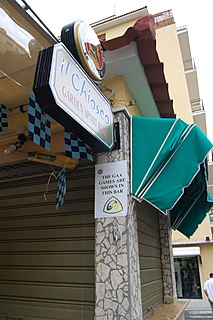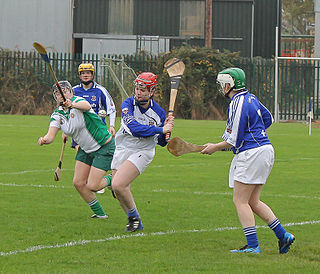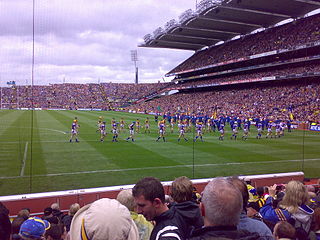 W
WGaelic games are sports played in Ireland under the auspices of the Gaelic Athletic Association (GAA). They include Gaelic football, hurling, Gaelic handball and rounders. Women's versions of hurling and football are also played: camogie, organised by the Camogie Association of Ireland, and ladies' Gaelic football, organised by the Ladies' Gaelic Football Association. While women's versions are not organised by the GAA, they are closely associated with it.
 W
WCamogie is an Irish stick-and-ball team sport played by women. Camogie is played by 100,000 women in Ireland and worldwide, largely among Irish communities.
 W
WGaelic football, commonly referred to as football or Gaelic, is an Irish team sport. It is played between two teams of 15 players on a rectangular grass pitch. The objective of the sport is to score by kicking or punching the ball into the other team's goals or between two upright posts above the goals and over a crossbar 2.5 metres (8.2 ft) above the ground.
 W
WThe two dominant sports of the Gaelic games are traditionally played in separate regions of Ireland. Hurling is traditionally played mainly in the provinces of Munster and Leinster, whereas Gaelic football is played in every county but is dominant in Ulster and Connacht and certain parts of the other provinces.
 W
WGaelic handball is a sport where players hit a ball with a hand or fist against a wall in such a way as to make a shot the opposition cannot return, and that may be played with two (singles) or four players (doubles). The sport, popular in Ireland, is similar to American handball, Welsh handball, fives, Basque pelota, Valencian pilota, and more remotely to racquetball or squash. It is one of the four Gaelic games organised by the Gaelic Athletic Association (GAA). GAA Handball, a subsidiary organisation of the GAA, governs and promotes the sport.
 W
WHurling is an outdoor team game of ancient Gaelic Irish origin, played by men. One of Ireland's native Gaelic games, it shares a number of features with Gaelic football, such as the field and goals, the number of players, and much terminology. There is a similar game for women called camogie. It shares a common Gaelic root with the sport of shinty, which is played predominantly in Scotland.
 W
WLadies' Gaelic football is a women's team sport. It is the women's equivalent of Gaelic football. Ladies' football is organised by the Ladies' Gaelic Football Association. Two teams of 15 players kick or hand-pass a round ball towards goals at each end of a grass pitch. The sport is mainly played in the Republic of Ireland and Northern Ireland, where the two main competitions are the All-Ireland Senior Ladies' Football Championship and the Ladies' National Football League. Both competitions feature teams representing the traditional GAA counties. The 2017 All-Ireland Senior Ladies' Football Championship Final was the best attended women's sports final of 2017. The 2019 final, after the 2019 FIFA Women's World Cup Final, was the second largest attendance at any women's sporting final during 2019. Historically Cork and Kerry have been the sport's most successful counties. Waterford, Monaghan and Mayo have also experienced spells of success. In more recent years, 2017 to 2019, Dublin have been the dominant team.
 W
WRounders is a bat-and-ball game played between two teams. Rounders is a striking and fielding team game that involves hitting a small, hard, leather-cased ball with a rounded end wooden, plastic, or metal bat. The players score by running around the four bases on the field.